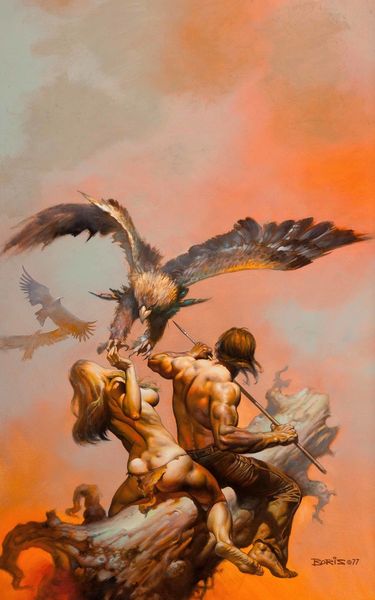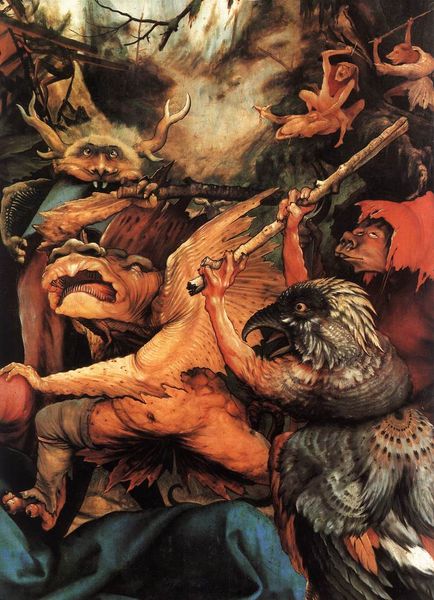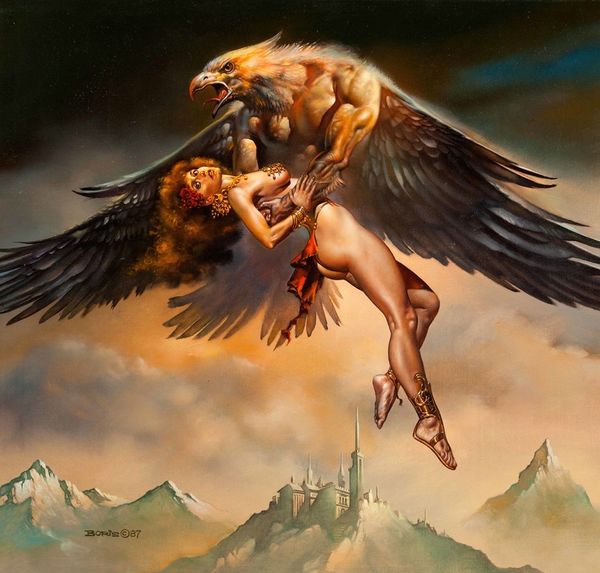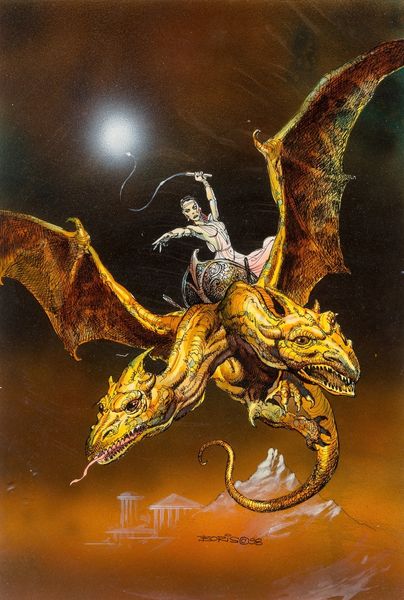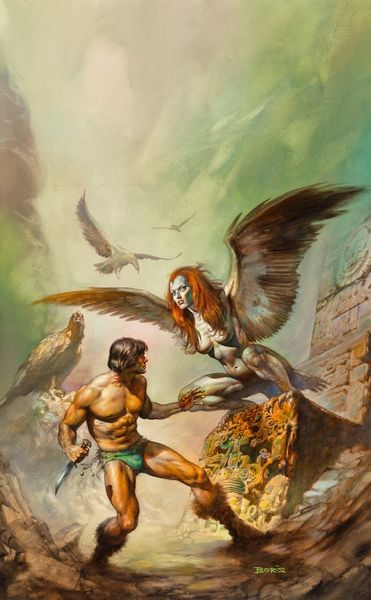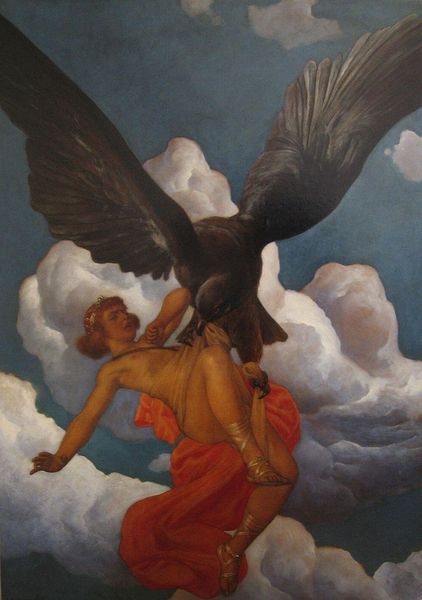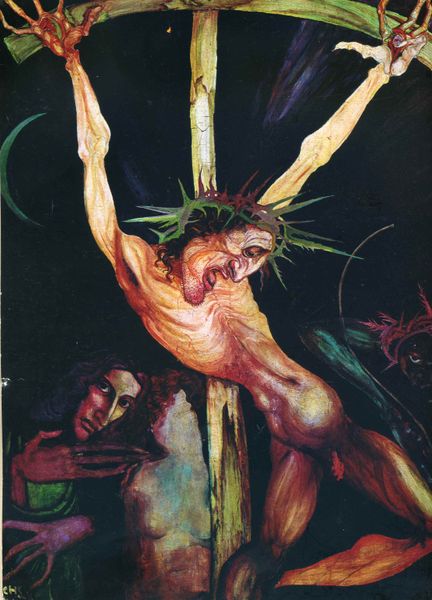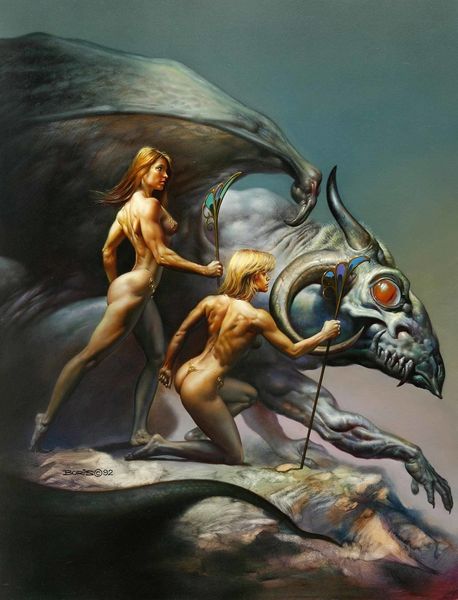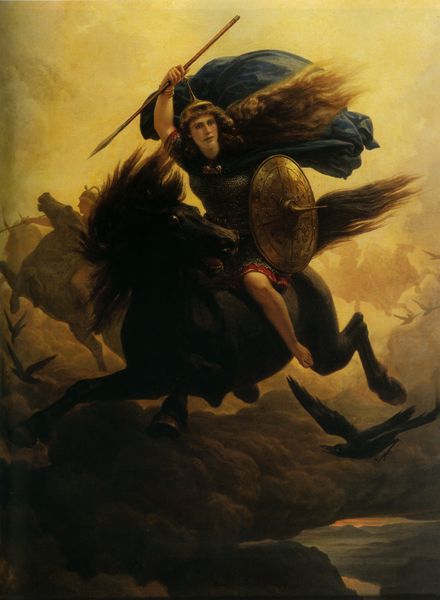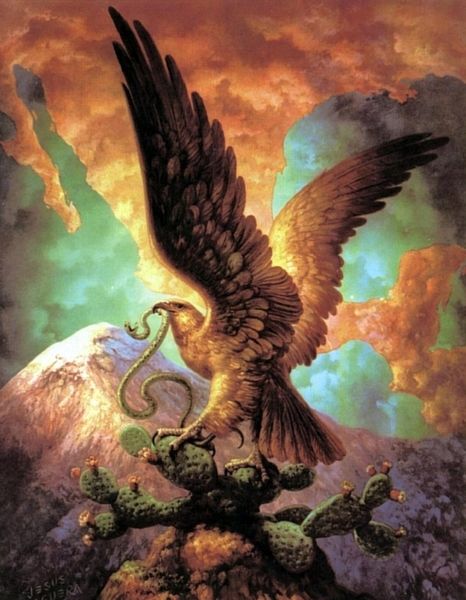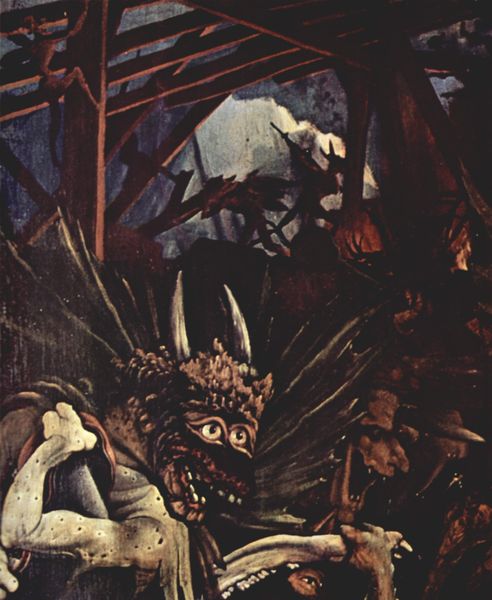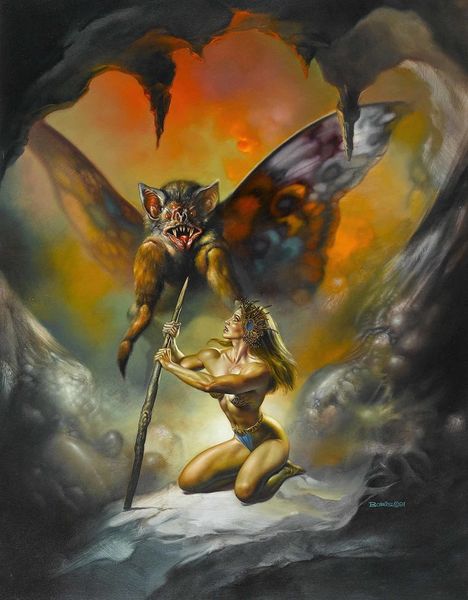
painting, oil-paint
#
portrait
#
narrative-art
#
painting
#
oil-paint
#
landscape
#
fantasy-art
#
figuration
#
oil painting
#
neo expressionist
#
mythology
#
symbolism
#
history-painting
#
expressionist
Copyright: Public domain
Curator: Jacek Malczewski's "Eloe from Ellenai" presents us with a fascinating tableau steeped in symbolism. It’s rendered in oil, though its precise date remains unconfirmed, adding a layer of enigma to its interpretation. Editor: Wow, I'm immediately struck by how heavy this painting feels. It’s not just the figures, but the very air around them seems dense. Like a dream, you're trying to recall in the morning, but its just fading... Curator: It's tempting to view "Eloe" through the lens of Polish Messianism, a Romantic nationalist philosophy. Malczewski, as a key figure in the Symbolist movement, often grappled with themes of sacrifice and national identity in his work. Editor: Sacrifice, that's definitely in there! Look at the exposed feet—are those his feet, dangling? It's vulnerability on full display. It’s not just some heroic pose; it is strangely intimate. Curator: The mythical undertones are crucial. Considering the symbolic elements alongside Malczewski's other work reveals that he uses classical and biblical mythology in a very personalized language to articulate contemporary discourses of gender, power, and national suffering. Editor: You can almost smell the fur draped over them; those colors are almost intoxicating. So much detail nestled with broader, dreamlike strokes – it really creates an otherworldliness to the figures themselves. And why the wings? An allusion to angels? Curator: Perhaps. And, from another angle, it can be seen as a kind of symbolic vehicle that can provide commentary on colonialist discourse about 'flights of freedom' when you position his subjects within contemporary debates surrounding subjugated identity, trauma and forced exile. Editor: It definitely stays with you, doesn't it? The longer you look, the stranger and more resonant it becomes. Curator: Indeed. Viewing "Eloe" challenges us to unpack its many layers, prompting a dialogue that spans both historical trauma and human possibility, and that might just be why it still captivates audiences today.
Comments
No comments
Be the first to comment and join the conversation on the ultimate creative platform.
